A hearty loaf filled with grains and seeds, this Multigrain Sourdough Bread has a subtle tang of sourdough with a crunchy, nutty texture. Great for sandwiches or toasted with butter, it's another great use for your sourdough starter discard!

Jump to:
- Why this recipe works
- Recipe Ingredients
- How to leave out the commercial yeast
- How you measure your ingredients matters
- How to make multigrain sourdough bread
- Storage instructions
- How to shape sandwich bread dough
- Questions asked and answered
- More recipes featuring sourdough discard to try
- Good news for sourdough bakers!
- Recipe
- Comments
Why this recipe works
- Full flavored whole wheat bread with a subtle sourdough tang and hearty multigrain crunch
- You can customize the multigrain mix to your liking
- Uses unfed sourdough starter discard
I make homemade peanut butter all the time, and sometimes I like a slice of rustic multigrain bread to serve it on. Plus, I'm always on the lookout for ways to use my weekly sourdough starter discard.
Enter this multigrain sourdough bread recipe, featuring a blend of different seeds and grains to add texture and crunch to the loaf. It fits the bill perfectly!
The flavor of this seeded multigrain sourdough bread is wonderful — nutty with a subtle sourdough tang and a bit of crunch in each bite. Toasting it really makes it shine, with all the grains adding even more nutty flavor.
Try it with your favorite sandwich spread, use it toasted with a sweet or savory dip, like this Whipped Feta Dip with Honey.
And if you'd like to include more whole wheat flour in your baking, whip up a batch of Whole Wheat Biscuits. They're easy to make and have a surprise inside!
And that peanut butter and jelly sandwich? Well, let me just say that making your own homemade peanut butter, spreading it on a slice of homemade multigrain bread topped with your favorite jam, is totally worth the effort!
⭐⭐⭐⭐⭐
This made a delicious loaf. It was so very helpful to have such excellent and detailed instructions even including a video - thanks very much!
- Sandy
Recipe Ingredients
You'll need the following ingredients to make this sourdough multigrain bread recipe:
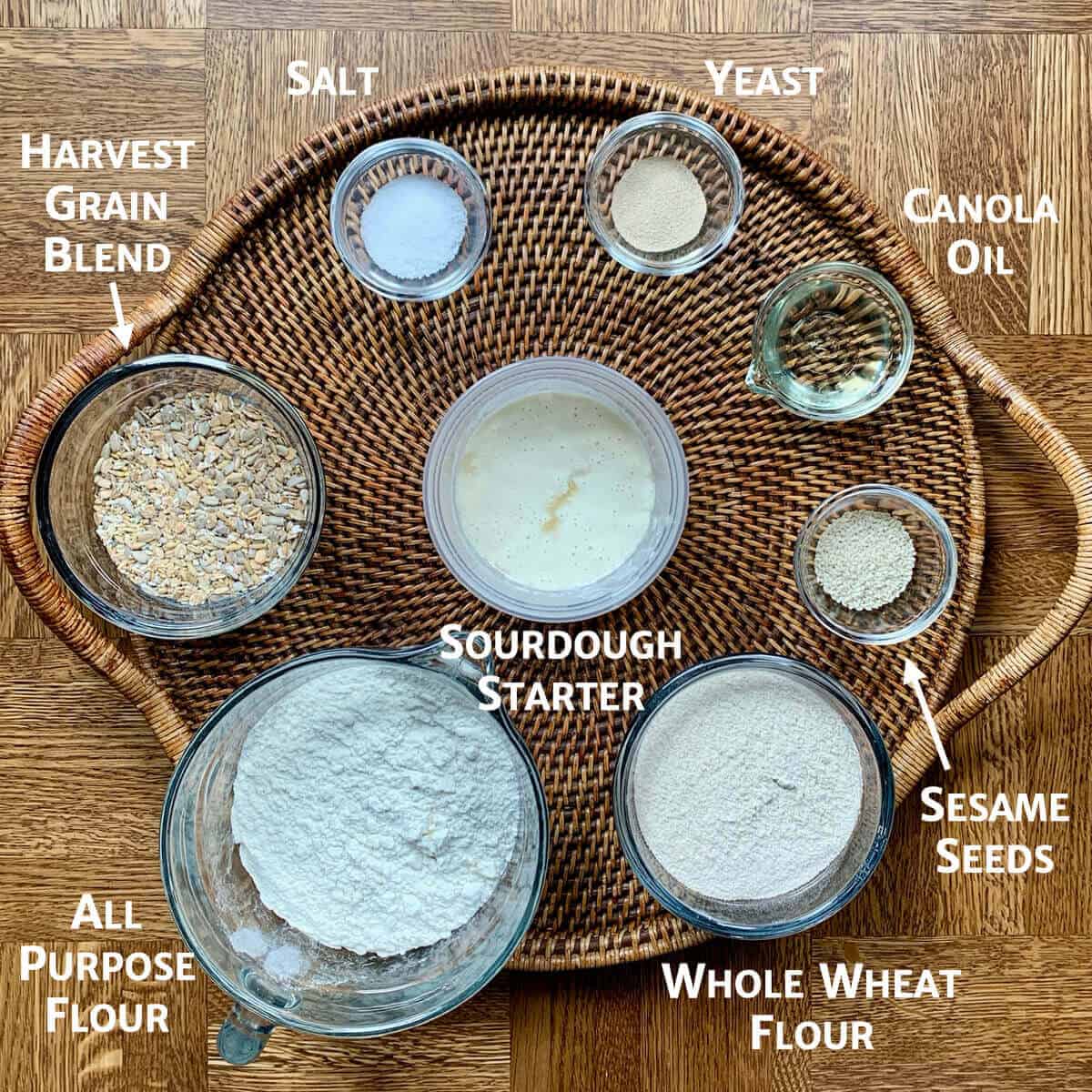
Ingredient Notes
Flour: Use a combination of all-purpose flour and white whole wheat flour for extra fiber and depth.
Whole grain mix: I use a multigrain blend that contains ten types of grains and seeds in the mix. You can use whatever mix of whole grains you'd like.
You could also leave out the whole grains and just increase the all-purpose flour by one cup. But it really wouldn't be a multigrain bread recipe anymore, now would it?
Sourdough starter discard: Sourdough discard is unfed sourdough starter, i.e. the amount you remove from your crock before feeding the remainder (I do this weekly). Since it's not active starter, it's used for flavor rather than fermentation (you'll need yeast for that).
Yeast: I use instant yeast in all my baking, but you can also use Active Dry yeast. If you use Active Dry yeast, then you might want to sprinkle yeast on to the warmed water with a teaspoon of sugar and allow it to sit for a few minutes before proceeding with the recipe. Letting it foam "proves" the yeast is active and ready to go to work.
If you'd like to omit the yeast and just use fed, active sourdough starter, see the instructions below.
Topping: Sesame seeds add even more crunch, or you can use your favorite blend of seeds. It's optional, but recommended.
See the recipe card for a full list of ingredients and measurements.
How to leave out the commercial yeast
If you don't want to use commercial yeast in this multigrain sourdough bread recipe, replace the yeast with ½ cup (114 grams) of active, fed starter, reduce the amount of flour by about ½ cup (57 grams), and reduce the milk by about ¼ cup (57 grams). The rising time will be longer (about double) for both the first and second rises. (Note: there are some rounding inconsistencies here due to the volume vs. weight measurement conversion.)
How you measure your ingredients matters
It's best to use a kitchen scale to measure out your ingredients. That way you will get consistent results.
That's especially true for flour. If you just scoop up flour using a measuring cup, you could be packing it in tightly or not be getting enough in the cup. It all depends on how you scoop and how well aerated (sifted) your flour is. Having too much or not enough flour leads to doughs and batters with widely different textures (too dry or too wet).
If you don't use a kitchen scale, at least use the "spoon & level" technique to measure your flour. That is, spoon the flour into your measuring cup and level it off with a knife, don't pack it in.
Believe me, it makes a difference.
How to make multigrain sourdough bread
Step 1: Make the dough
The steps for making a sourdough sandwich bread recipe aren't that different from any other type of bread. There's just an extra step: soak the grain in water to soften them. Just place them with the boiling water in a mixing boil, then allow to cool to lukewarm, about 20 minutes (photo 1).
You can also make this multigrain bread recipe in a bread machine. Just soak the grains before adding them with the rest of the ingredients in the order your bread machine uses. Be sure to use the manual cycle if you want to shape the dough into a sandwich bread later.

Now continue making the bread dough as usual. Mix in the flours, sourdough discard, canola oil, salt, and yeast (photo 2).
Knead with the dough hook until you've made a soft dough, adding additional water or flour in 1 tablespoon increments, as needed. The dough will be slightly sticky, and will depend on the humidity of the day.

Step 2: Let the dough rise
Cover the dough in the bowl, and let it rise in a warm place until it's almost doubled, about 1 to 1½ hours (photo 3). I use the oven with just the light turned on.

Step 3: Shape the dough
There are many ways to shape bread dough into a loaf. The idea is to have the dough rolled tightly when it's placed in the pan. See below for one dough shaping technique.
After shaping, put the dough in a standard loaf pan. You can make sure the bread won't stick if you spray the pan with baking spray and line it with parchment paper. Cover it with lightly greased plastic wrap, then let the loaf rise until it's very puffy, about 1 to 1½ hours (photo 4).
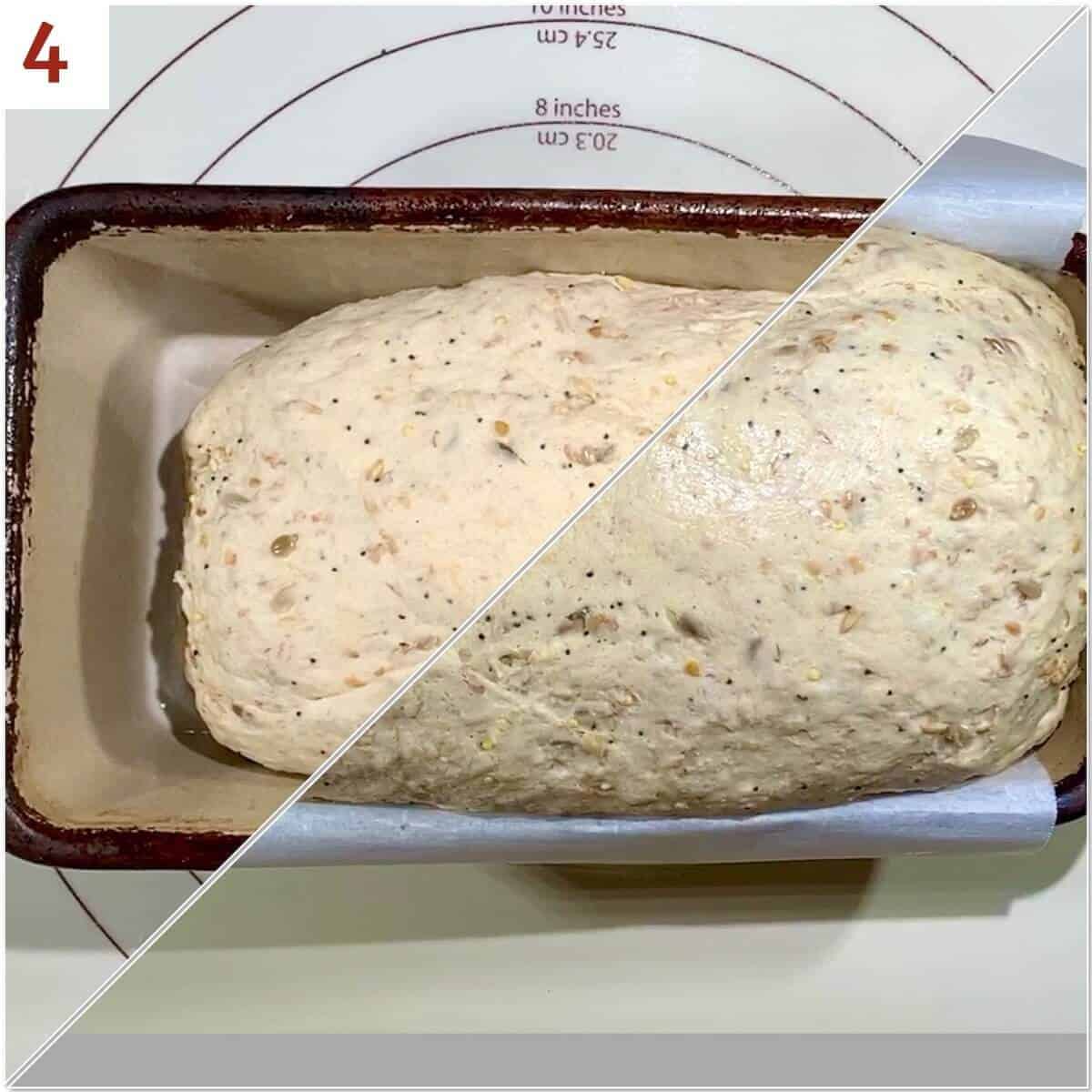
Step 4: Bake the dough
Towards the end of the rising time, place a large saucepan filled with water on the bottom of the oven when you start to preheat it. This creates steam and helps to give the loaves a crusty exterior.
After letting the shaped dough rise in the pan, slash the top with a bread lame or serrated knife, then sprinkle it with whatever topping you'd like. I use sesame seeds, but you can use whatever seed blends you'd like.
Bake the bread at 425˚F for 30 minutes. Turn the oven down to 375°F and bake for another 10 to 15 minutes (photo 5).
Remove the bread from the oven, and check for doneness. The bread will be done when the interior measures 200°F as measured with a digital thermometer (or when the bottom sounds hollow when knocked).
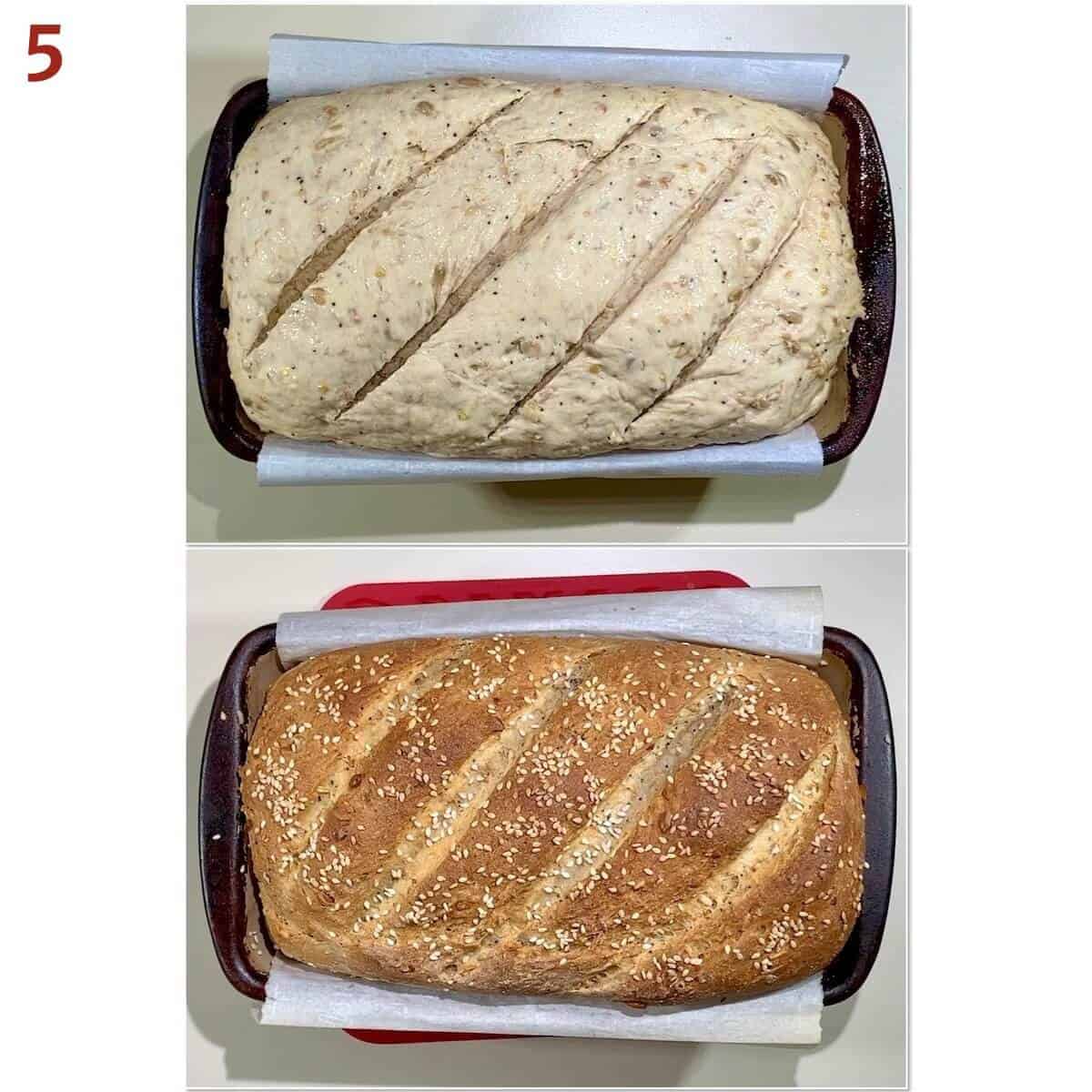
Storage instructions
This sourdough multigrain bread can be stored in an airtight container for up to a week at room temperature (refrigeration will dry out the bread). For longer storage, place the whole or sliced bread in an airtight bag and freeze for up to two weeks.
How to shape sandwich bread dough
Step 1: Flatten the dough into a rough rectangle (or as close as you can get...mine below was more of a circle) about an inch high. Fold the upper two corners to meet in the middle, like when folding a paper airplane (photo 6).

Step 2: Fold the point down to be even with the lower edge of the folded corners (photo 7). Repeat the process until you've run out of dough.
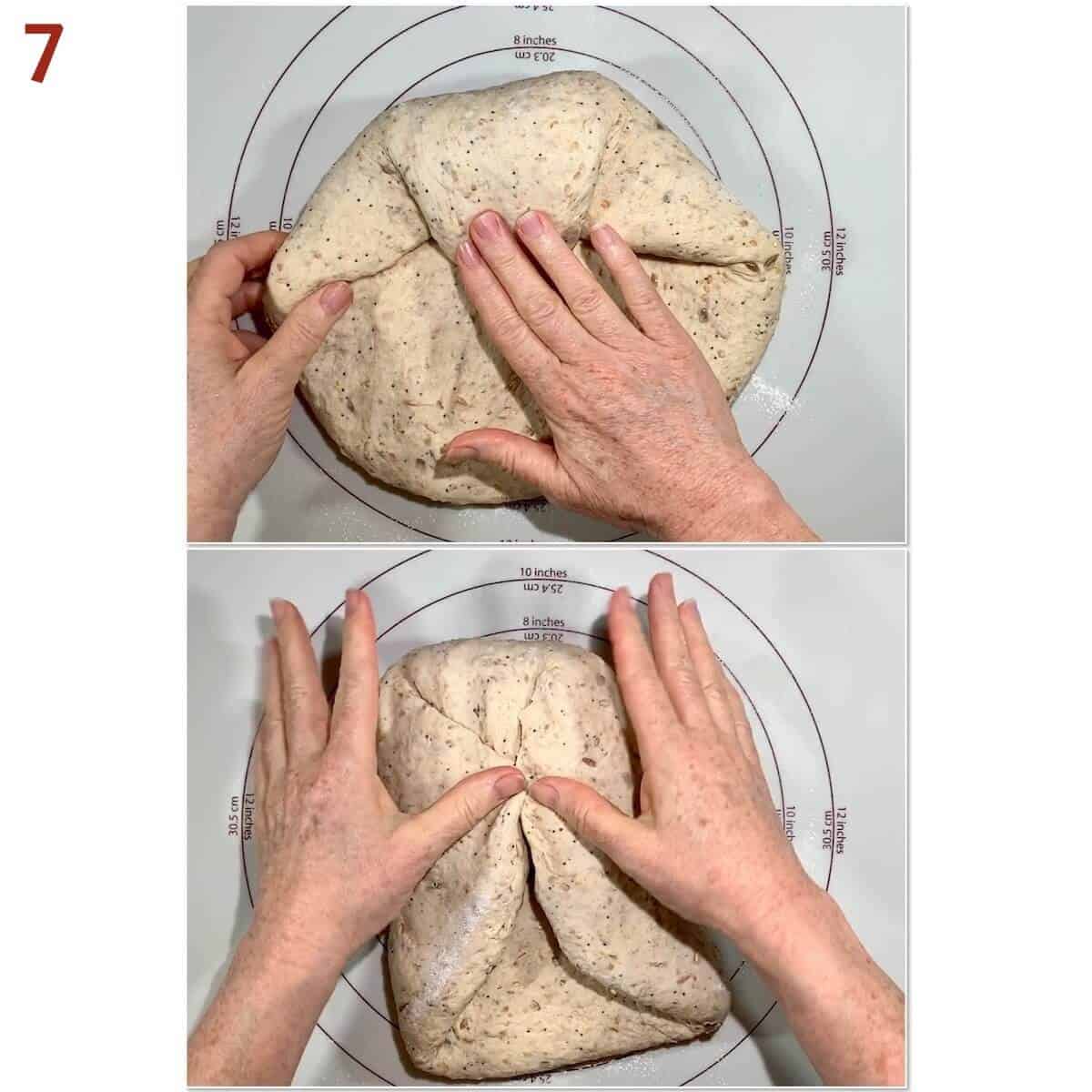
Step 3: Pinch the sides and the seam closed, then roll the dough back and forth on the counter into a log to insure the shape is even (photo 8).

Questions asked and answered
Here are some questions you might have...
The multigrain blend that I use contains four grains (whole oat berries, millet, rye flakes, and wheat flakes) and four seeds (flax, poppy, sesame, and sunflower). You can choose your favorites.
No, these terms are two different items. Whole grain contains all the parts of a specific grain kernel. Multigrain are a blend of grains, seeds, or nuts, whole or coarsely chopped, but don't necessarily contain the whole grain.

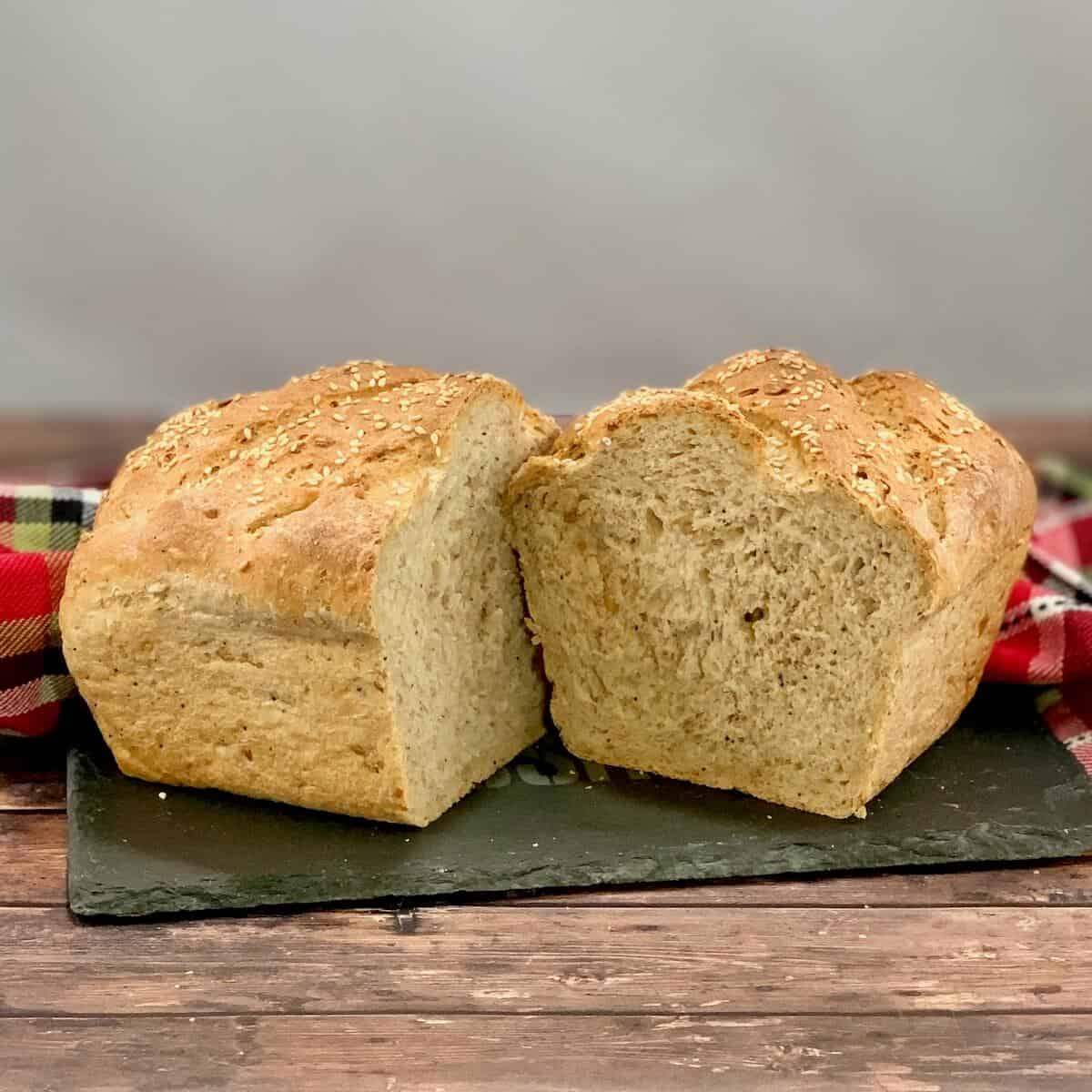
More recipes featuring sourdough discard to try
Recipe

Multigrain Sourdough Discard Bread
Equipment
Ingredients
For the dough
- 1 cup Harvest Grains Blend, see Recipe Notes
- 1½ cups water, boiling
- 2¾ cups all-purpose flour
- 1¾ cups white whole wheat flour
- 1 cup sourdough starter discard, unfed
- 2 tablespoons canola oil
- 2½ teaspoons kosher salt
- 1½ teaspoons instant yeast, or Active Dry, see Recipe Notes
For the topping
- 1 tablespoon sesame seeds, or your favorite blend of seeds for topping, optional
Instructions
- In the mixing bowl of a stand mixer, combine the Harvest Grains Blend and boiling water. Let them cool to lukewarm, about 20 minutes.
- Mix in the flours, sourdough discard, canola oil, salt, and yeast. Knead with the dough hook until you've made a soft dough, adding additional water or flour in 1 tablespoon increments, as needed. The dough will be slightly sticky, and will depend on the humidity of the day.
- Cover the dough in the bowl, and let it rise in a warm place until it's almost doubled, about 1 to 1½ hours. I use the oven with just the light turned on.
- Turn the dough out onto a lightly floured work surface and gently fold it over a few times to deflate it. Shape it into a loaf by patting it out into an 8-inch by 12-inch rectangle, then folding the upper corners in to the middle. Fold the point down to where the fold starts, then repeat until you get a log shape. Roll the log to seal the seam down. See the pictures in the post to see how to do the shaping.
- Spray a standard loaf pan with baking spray, then line with parchment paper. Leave an overhang on the long sides to ease the loaf out of the pan.
- Place the loaf into the prepared loaf pan and cover it with lightly greased plastic wrap. Let the loaf rise until it's very puffy, about 1 to 1½ hours.
- Towards the end of the rising time, place a large saucepan filled with water on the bottom of the oven. This creates steam and helps to give the loaves a crusty exterior. Preheat the oven to 425 °F, allowing at least 20 minutes of preheating before baking to avoid hot spots.
- Use a very sharp knife to make several slashes with a bread lame or serrated knife on the top of the loaf. Brush or spray with water, then sprinkle with sesame seeds (if using).
- Bake the bread for 30 minutes. Turn the oven down to 375 °F and bake for another 10 to 15 minutes.
- Remove the bread from the oven, and check for doneness. The bread will be done when the interior measures 200 °F as measured with a digital thermometer (or when the bottom sounds hollow when knocked).
- Place on a rack and cool completely. Slice and enjoy!
- Storage instructions: This sourdough multigrain bread can be stored in an airtight container for up to a week at room temperature (refrigeration will dry out the bread). For longer storage, place the whole or sliced bread in an airtight bag and freeze for up to two weeks.





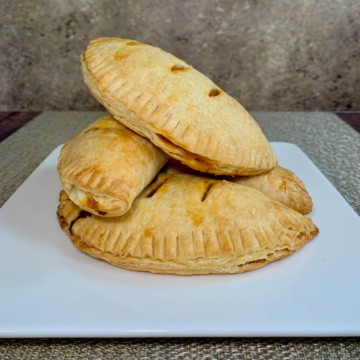


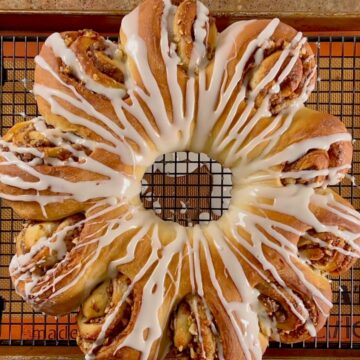



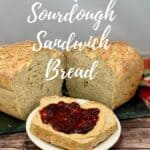
Deon says
Hi,
I’ve made this loaf once and the family loved it. Just one ? I notice there is no sugar or honey in the Recipe. Is this a mistake?
Tammy Spencer says
Hi Deon, thanks for your question. No, there’s no mistake - no extra sweeteners are needed for the recipe because the yeast already have plenty of carbs to feast on from the flours and grains. If you want to add a touch of sweetness, you can add 1 tablespoon (21 grams) of honey, and watch the timing of the first rise for when the dough doubles. Happy baking! 🙂
Deo says
Hi,
I’ve made this loaf once and the family loved it. Just one ? I notice there is no sugar or honey in the Recipe. Is this a mistake?
Jen says
Oops. I now see that you’ve included a handy converter to get the ingredient weights in grams. Disregard my note above. Will be doing this for my next loaf.
Tammy Spencer says
No worries! I appreciate you looking out for your fellow bakers!
Jen says
Hi Tammy. Haven’t tried this yet but it definitely looks like my kind of bread. (I actually used to make that old KAF recipe often). Just a thought—you should include the weight measures in your ingredient list so readers know they’re following your method exactly. I also bake with a scale; it’s really the best and easiest way. Thx, Jen.
Tammy Spencer says
Hi Jen, Thanks for writing in. I agree about using weight measurements when baking! The default unit measure is US Customary for those that don't use a scale, but if you click on the Metric button, you'll find the weight measurements in grams there. I hope you enjoy making this recipe. Happy baking! 😉
SANDY LYNN STEVENS says
This made a delicious loaf. It was so very helpful to have such excellent and detailed instructions even including a video - thanks very much! My loaf looked a bit more dense than the illustration, probably due to using a different flour - KA Super Blend + pumpkin seeds, which might have benefited from additional water (I'll try that next time). It is also the first dough I have made that strained my old and trusty Kitchen Aid mixer so I ended up kneading it by hand at the end. All in all, very pleased with result and will make it again.
Tammy Spencer says
Hi Sandy, I'm so glad you liked the bread, and I appreciate your kind words. Thanks for sharing! 😉